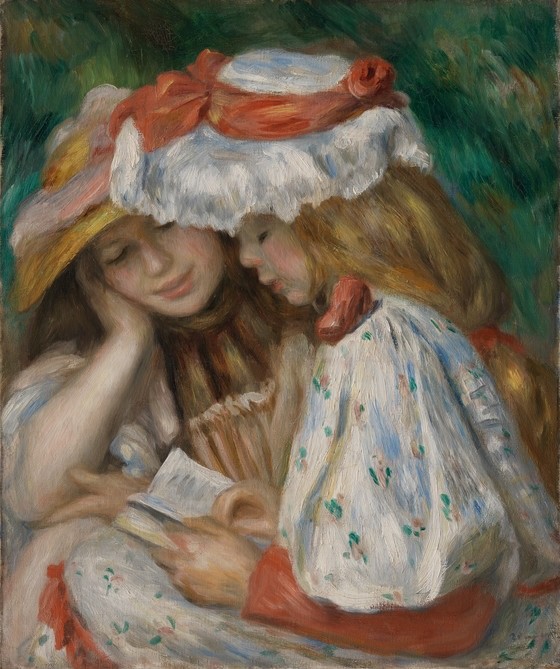A third bit of evidence in the complex text issue has to do with the strength of evidence on the other side of the ledger. In my two previous posts, I have indicated why the common core is embracing the idea of teaching reading with much more complex texts. But what about the evidence that counters this approach?
Many years ago, when I was a primary grade teacher, I was struggling to teach reading. I knew I was supposed to have groups for different levels of kids, but in those days information about how to make those grouping decisions was not imparted to mere undergraduates. I knew I was supposed to figure out which books would provide the optimal learning experience, but I had no technology to do this.
So, I enrolled in a master’s degree program and started studying to be a reading specialist. During that training I learned how to administer informal reading inventories (IRI) and cloze tests and what the criteria were for independent, instructional, and frustration levels. Consequently, I tested all my students, and matched books to IRI levels using the publisher’s readability levels. I had no doubt that it improved my teaching and students’ learning.
I maintained my interest in this issue when I went off for my doctorate. I worked with Jack Pikulski. Jack had written about informal reading inventories (he’d studied with Johnson and Kress), and as a clinical psychologist he was interested in the validity of these measures. He even sent a bunch of grad students to an elementary school to test a bunch of kids, but nothing ever came of that study. Nevertheless, I learned a lot from Jack about that issue.
He had (has) a great clinical sense and he was skeptical of my faith in the value of those instructional level results. He recognized that informal reading inventories were far from perfect instruments and that at best they had general accuracy. They might be able to specify a wide range of materials for a student (say from grade 2 to 4), but that they couldn’t do better than that. (Further complicating things were the readability estimates. These had about the same level of accuracy.)
For Jack, the combination of two such rough guestimates was very iffy stuff. I liked the certainty of it though and clung to that for a while (until my own clinical sense grew more sophisticated).
Early in my scholarly career, I tracked down the source of the idea of independent, instructional, and frustration levels. It came from Emmett Betts’ textbook. He attributed the scheme to a study conducted by one of his doctoral students. I tracked down that dissertation and to my dismay it was evident that they had just made up those designations without any empirical evidence, something I wrote about 30 years ago!
Since then, readability measures have improved quite a bit, but our technologies for setting reading levels have not. Studies by William Powell in the 1960s, 70s, and 80s showed that the data that we were using did not result in an identification of optimum levels of student learning. He suggested more liberal placement criteria, particularly for younger students. More liberal criteria would mean that instead of accepting 95% word reading accuracy as Betts had suggested, Powell identified 85% as the better predictor of learning—which would mean putting kids in relatively more difficult books.
Consequently, I have sought studies that would support the original contention that we could facilitate student learning by placing kids in the right levels of text. Of course, guided reading and leveled books are so widely used it would make sense that there would be lots of evidence as to their efficacy.
Except that there is not. I keep looking and I keep finding studies that suggest that kids can learn from text written at very different levels (like the studies cited below by Morgan and O’Connor).
How can that be? Well, basically we have put way too much confidence in an unproven theory. The model of learning underlying that theory is too simplistic. Learning to read is an interaction between a learner, a text, and a teacher. Instructional level theory posits that the text difficulty level relative to the student reading level is the important factor in learning. But that ignores the guidance, support, and scaffolding provided by the teacher.
If the teacher is doing little to support the students’ transactions with text then I suspect more learning will accrue with somewhat easier texts. However, if reasonable levels of instructional support are available then students are likely to thrive when working with harder texts.
The problem with guided reading and similar schemes is that they are focused on helping kids to learn with minimal amounts of teaching (something Pinnell and Fountas have stated explicitly in at least some editions of their textbooks). But that switches the criterion. Instead of trying to get kids to optimum levels, that is the levels that would allow them to learn most, they have striven to get kids to levels where they will likely learn best with minimal teacher support.
The common core standards push back against the notion that students learn best when they receive the least teaching. The standards people want to know what it takes for kids to learn most, even if the teacher has to be deeply involved. For them, challenging text is the right ground to maximize learning… but the only way that will work is if kids are getting substantial teaching support in the context of that hard text.
P.S. Although Lexiles have greatly improved readability assessment (shrinking standard errors of measurement and improving the amount of comprehension variance that can be explained by text difficulty), and yet we are in no better shape than before since there are no studies indicating that if you teach students at particular Lexile levels more learning will accrue. (I suspect that if future studies go down this road, they will still find that the answer to that issue is variable; it will depend on the amount and quality of instructional support).
References
Betts, E. A. (1946). Foundations of reading instruction. New York: American Book Company.
Morgan, A., Wilcox, B. R., & Eldredge, J. L. (2000). Effect of difficulty levels on second-grade delayed readers using dyad reading. Journal of Educational Research, 94, 113–119.
O’Connor, R. E., Swanson, H. L., & Geraghty, C. (2010). Improvement in reading rate under independent and difficult text levels: Influences on word and comprehension skills. Journal of Educational Psychology, 102, 1–19.
Pinnell, G. S., & Fountas, I. C. (1996). Guided reading: Good first teaching for all children. Portsmouth, NH: Heinemann.
Powell, W. R. (1968). Reappraising the criteria for interpreting informal inventories. Washington, DC: ERIC 5194164.
Shanahan, T. (1983). The informal reading inventory and the instructional level: The study that never took place. In L. Gentile, M. L. Kamil, & J. Blanchard (Eds.), Reading research revisited, (pp. 577–580). Columbus, OH: Merrill.







Comments
See what others have to say about this topic.